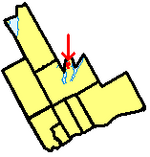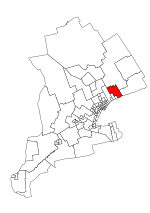Scugog Centre
Communities in the Regional Municipality of DurhamOntario geography stubsUse Canadian English from January 2023
Scugog Centre is a community in the township of Scugog, Ontario. Located on the shores of Lake Scugog's east side (opposite Scugog Island centred at Island Road (Regional Road 7) and Demara Road) just east of Lakeside Beach. The area is mainly agricultural with few homes, with more residential areas along the lake. At the intersection of Island Road, Demara Road and Stephenson Point Road are a few historic structures: Scugog Island Hall (banquet facility built in 1884) Scugog Island United Church and Manse (built 1868) Scugog Island Centre School (built 1865)
Excerpt from the Wikipedia article Scugog Centre (License: CC BY-SA 3.0, Authors).Scugog Centre
Demara Road, Scugog
Geographical coordinates (GPS) Address Nearby Places Show on map
Geographical coordinates (GPS)
| Latitude | Longitude |
|---|---|
| N 44.156 ° | E -78.898 ° |
Address
Demara Road 2715
L9L 1B6 Scugog
Ontario, Canada
Open on Google Maps




